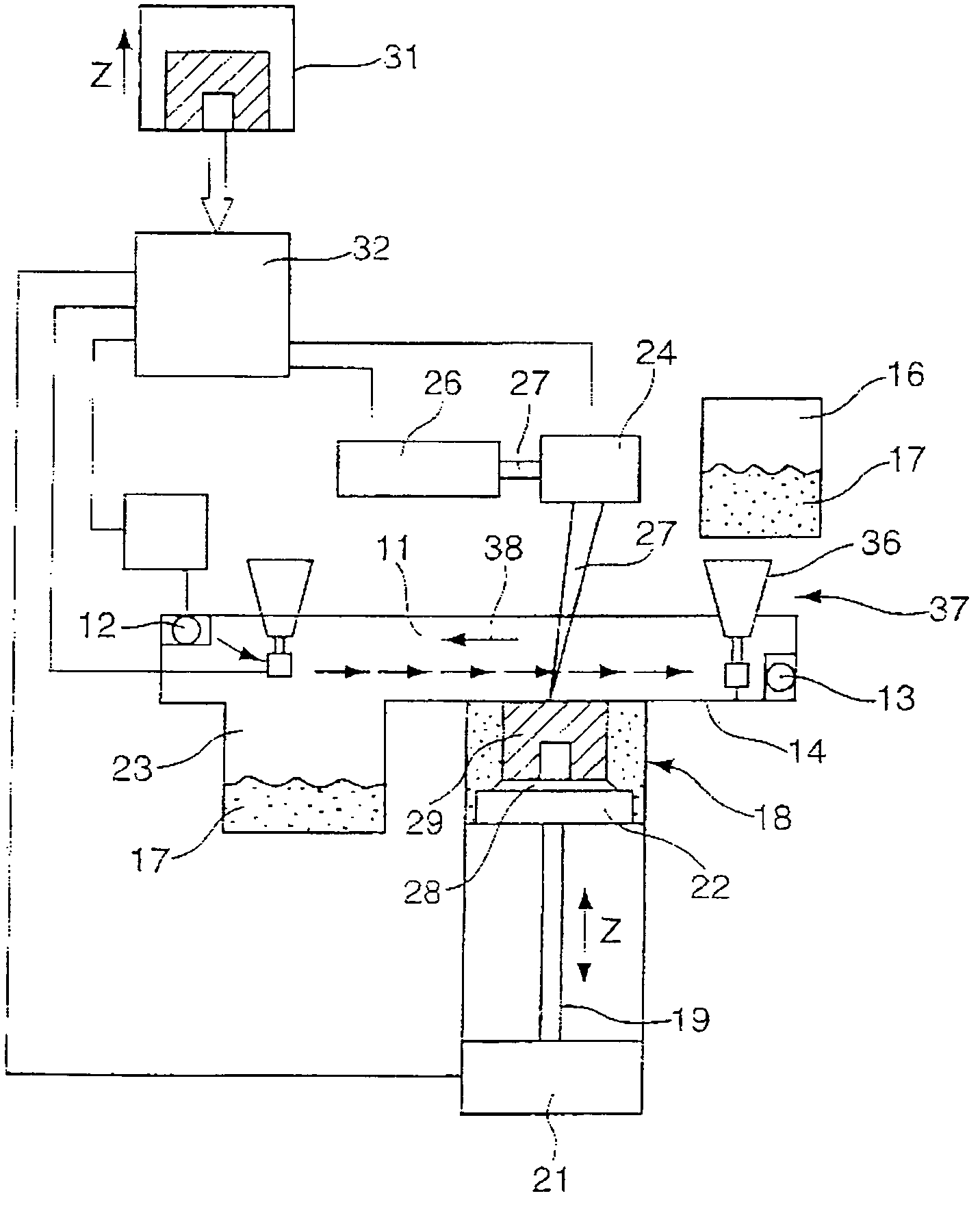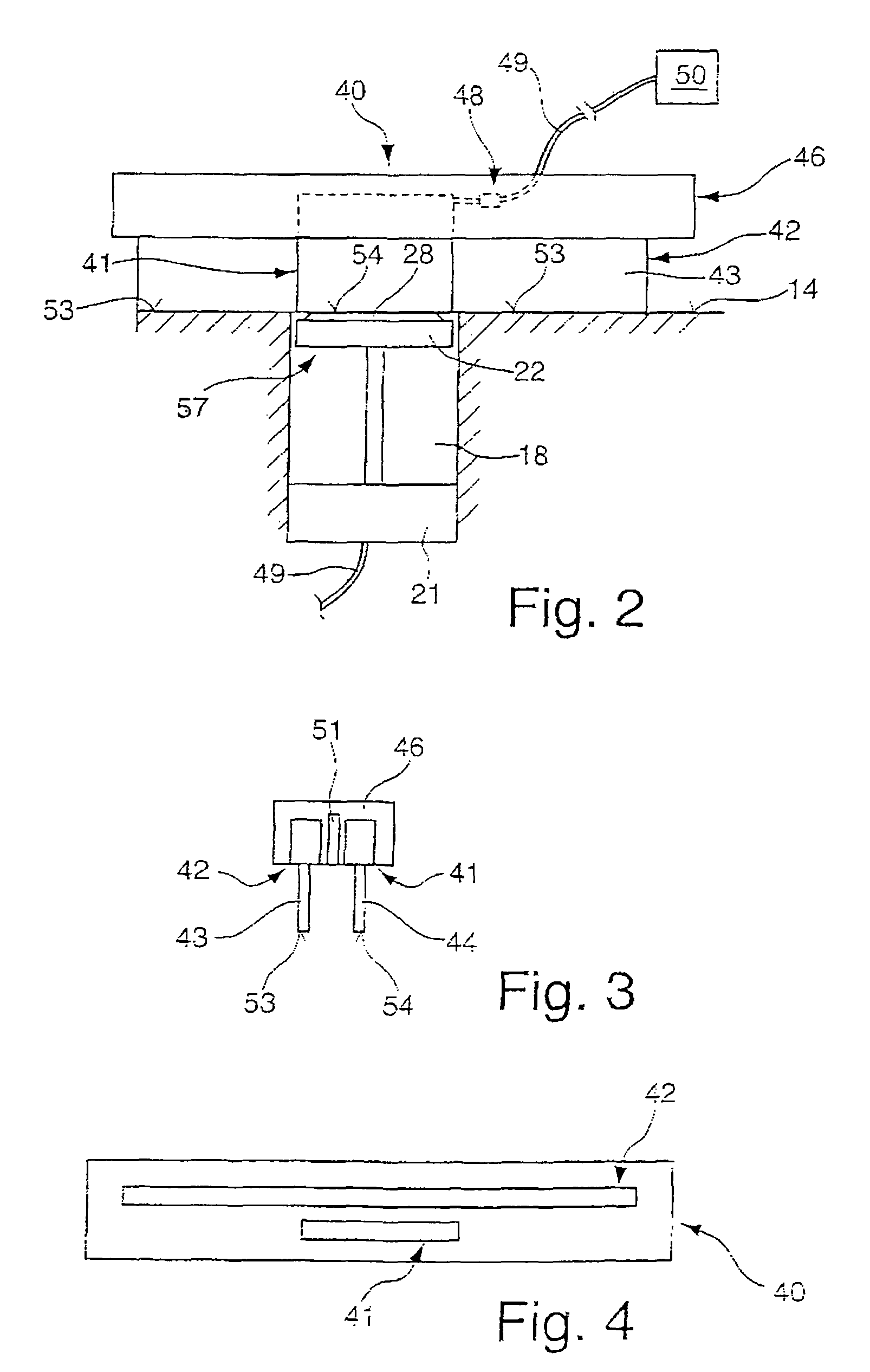Method for the manufacture of a molding as well as a sensor unit for the application thereof
a sensor unit and manufacturing method technology, applied in the direction of additive manufacturing processes, ventilation systems, heating types, etc., can solve the problems of affecting the measurement accuracy of the sensor unit, the levelling assembly colliding with the build platform or the base plate, and the layer not being sufficiently secure to the base plate, etc., to achieve the effect of reducing the cost, simple conditions for adjusting the starting position, and increasing the measurement certainty
- Summary
- Abstract
- Description
- Claims
- Application Information
AI Technical Summary
Benefits of technology
Problems solved by technology
Method used
Image
Examples
Embodiment Construction
[0031]FIG. 1 shows an apparatus for selective laser melting, such as it is, for example, described in DE 198 53 978 C1. Said apparatus comprises a process chamber 11 with a protective gas inlet 12 and a protective gas outlet 13. A storage tank 16 that is filled with material powder 17 is provided above a bottom area 14. For example, the powder used may be steel, titanium or aluminum. A build chamber 18 ends in the bottom area 14 from below, wherein a build platform 22 driven by a drive 21 via a lifting screw 19 is arranged in said build chamber 18. A base plate 28 is arranged on the build platform 22 in a detachable manner. A collection tank 23 for the material powder 17 is provided next to the build chamber 18. A displacement assembly 24 directing a laser beam 27 generated by a laser 26 onto the build platform 22 or base plate 28 is provided above the build chamber 18.
[0032]In order to produce a molding 29, for example a prototype of a component, the component coordinates are, in a...
PUM
| Property | Measurement | Unit |
|---|---|---|
| thickness | aaaaa | aaaaa |
| thickness | aaaaa | aaaaa |
| electric resistance | aaaaa | aaaaa |
Abstract
Description
Claims
Application Information
 Login to View More
Login to View More - R&D
- Intellectual Property
- Life Sciences
- Materials
- Tech Scout
- Unparalleled Data Quality
- Higher Quality Content
- 60% Fewer Hallucinations
Browse by: Latest US Patents, China's latest patents, Technical Efficacy Thesaurus, Application Domain, Technology Topic, Popular Technical Reports.
© 2025 PatSnap. All rights reserved.Legal|Privacy policy|Modern Slavery Act Transparency Statement|Sitemap|About US| Contact US: help@patsnap.com



